I won’t bury the lede. If you’re debating whether you should buy an RV or a Tiny House … you should probably get the RV.
But I should choose my words carefully. Because “Tiny Home” means different things to different people. If it walks like a duck and talks like a duck … it might be a Park Model RV (PMRV), destination trailer, travel trailer, NOAH-certified Tiny House, or backyard DIY project. They all kinda look like a Tiny Home!
I’ll dissect the different types of “Tiny Homes” in the next section. But for now, let’s keep it simple. Here are my big takeaways from this post:
- RVs are designed for seasonal, mobile traveling, while Tiny Homes are designed for year-round, semi-permanent living.
- If you want to travel and explore, get a conventional RV.
- If you want to relocate seasonally, get a destination trailer.
- If you want to park it and leave it, get a NOAH-certified Tiny House on Wheels (THOW) or a Park Model RV (PMRV).
- Only build or buy a DIY Tiny House if you’re willing to fly under the legal radar. Or you have a carefully vetted plan.
Fun fact: I actually built my own Tiny House! Well, mostly built it. I had to sell it before all the trappings were installed. And while it wasn’t the perfect Instagram Tiny House, I had lots of fun designing it. It had a bright yellow door, a panoramic living room window, cherry plank vinyl flooring, exposed Douglas fir beams, and a black iron pipe chandelier (which I never finished, sadly).
What, Exactly, Is a “Tiny House”?

Before we get into the comparisons, I need to define some terms.
I’m talking about Tiny Homes on Wheels (THOWs). I’m not comparing granny flats, A-frames, geodesic domes, Earth Shelters, yurts, or other alternative living structures.
But there are several other types of “homes on wheels” as well.
- Recreational Vehicle (RV): The mobile dwellings we know and love! Uncle Sam defines an RV as “a temporary dwelling, for travel and recreation purposes, and licensed as a motor home, camper or travel trailer.” RVs are “self-contained,” meaning they come with tanks, fuel, and batteries so they can be operated without a connection to utilities.
- Destination Trailer: Technically, a destination trailer is just an RV. It’s not a legally controlled term. But in the industry, a “destination trailer” is a term for a travel trailer designed for seasonal living, like a lakeside vacation spot or Arizona’s Quartzsite.
- Park Model RV: A Park Model RV (PMRV) is a particular type of RV built to the ANSI 119 standard. A PMRV looks like a classic Tiny Home! But they’re designed for long-term camping at an RV campground, usually as rental units. They aren’t self-contained; they have to be connected to water, electricity, and sewer in order to work. Most must be professionally moved.
- Mobile Home: Technically known as manufactured homes, mobile homes are built by factories, not contractors. They are built to the Manufactured Home Construction and Safety Standards (HUD) code. Like PMRVs, mobile homes are not self-contained. They must be professionally moved. I’m not discussing mobile homes in this post.
- Tiny Home: To be legally considered a “Tiny Home,” a Tiny House must be built on a permanent site-built or approved engineered foundation. These residences are usually built under the rules of Appendix Q in the IRC building code, which was added to the 2018 IRC version. Not all areas have adopted the 2018 IRC (or Appendix Q), and zoning codes may prohibit Tiny Homes as single-family homes or accessory dwelling units.
- Tiny Houses on Wheels (THOWs): These are the “OG” of Tiny Homes, the founders of the modern movement. They occupy a legal gray area, neither home nor RV. Most are built to the NOAH standard, which is an ANSI accredited inspection body. Some are DIY-built and have no certification. However, most places still don’t accept NOAH certification.
This is post is not long enough to break down the pros and cons of each. We’d be here for weeks!
Thankfully, many “Tiny Homes” are sold as RVs! Tumbleweed Tiny Houses, for instance, is an RVIA-approved RV manufacturer!
- Most commercial Tiny Houses 8.5 feet wide or less are actually sold as RVs.
- If your Tiny Home is wider than 8.5 feet (e.g., 10, 12, or 14 ft), then they’re usually sold as a Park Model, NOAH Tiny House, or with no certification at all.
I want to call attention to a non-certified Tiny Home – in other words, a THOW not built as an RV or NOAH-certified. If you build or buy a DIY Tiny Home (or RV) without certification, all bets are off. You have no idea the mountain of paperwork that you must surmount as the builder or buyer of a DIY Tiny Home on Wheels. Unless you’re lucky enough to own property in a rural area where the government keeps its long nose out of yer own damn business, you can’t beat the bureaucracy. They will wrap red tape around your throat and strangle you senseless. Only buy a non-certified Tiny Home if you have a detailed, proven plan of where to put it – and leave it there!
RV Vs. Tiny Home on Wheels
Mobility & Parking
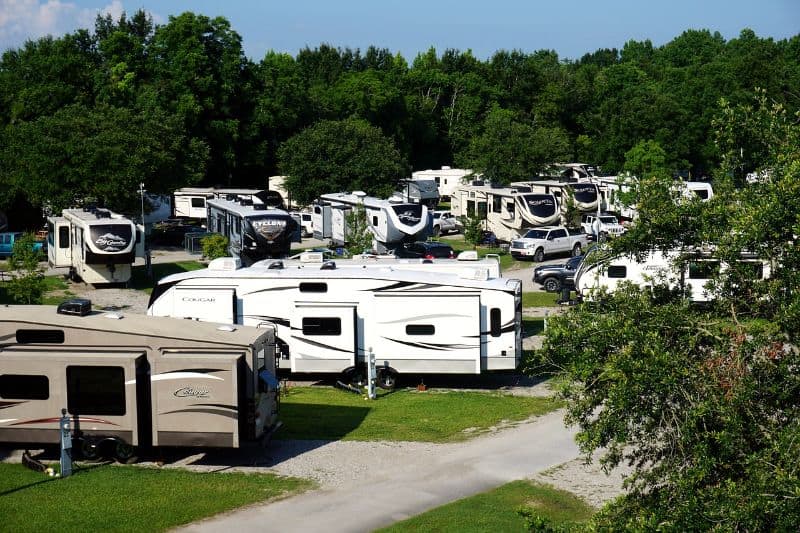
I moved my Tiny House about five miles across town, and I nearly called the ER for an oncoming heart attack. I envisioned my glass slider windows cracking, a piece of rake trim blowing off, the tires blowing out, and the whole thing collapsing like a house of cards.
None of that happened, of course. But tiny homes simply aren’t designed for daily relocation.
- You have to box up or strap down everything.
- You must hire a commercial truck (and driver) capable of flat-towing 10,000+ lbs.
- You need oversize permits for THOWs wider than 8’6” or taller than 13’6” (in most states).
- The costs of professionally moving a Tiny Home across state lines can easily top $2,000!
Even if you tow your own Tiny Home, it will cost much more than moving an RV. You’ll pay a small fortune in fuel to haul an 8,000-20,000-lb Tiny House. The saying normally goes that a Tiny House has the aerodynamics of a brick, but truth is, the brick is better!
Once you move your Tiny Home, there’s no guarantee you’ll be able to park it. Many RV parks don’t accept Tiny Houses, even with NOAH certification. And with their cathedral ceilings and raked rooflines, some Tiny Homes are too tall for RV campsites. And most zoning ordinances don’t allow Tiny Houses on Wheels as accessory dwelling units or primary residences. Land of the free, indeed!
If you plan on relocating more than once a year, don’t get a Tiny Home. Even once a year might be too much for some people. A destination trailer is a much, much better choice for seasonal living.
Costs & Finances
If you thought the #RVLife was expensive, you hain’t seen nothin’ yet! The price per square foot of a Tiny Home is comparable to Mar-A-Lago. This is for three reasons:
- Custom craftsmanship is expensive and time-consuming.
- Appliances cost (roughly) the same for a 400-sqft Tiny House as a 1,500-sqft residence. For example, both use the same mini-split air conditioner!
- Tiny Homes typically use premium building materials like finished black iron, cedar wood, lifetime vinyl flooring, etc. They don’t sneeze at a $100 brass faucet, either.
Meanwhile, you won’t find a $100 brass faucet in any mainstream RV except $150,000+ motorhomes. Recreational vehicles are built to a much, MUCH tighter margin.
- You can find new RVs for as cheap as $80-$100 per square foot. Most RVs retail for around $150-$200 per square foot.
- Meanwhile, Tiny Homes typically cost $300-$400 per square foot.
Costs of Maintenance
I don’t have enough evidence to compare costs of ownership or maintenance between RVs and Tiny Houses. Studies show the average annual costs of RV maintenance are between $500 (think small travel trailer) to $2,000 (think diesel-powered motorhome). I would expect Tiny Home costs to be similar, somewhere around $1,000 (1-2% of purchase price).
Resale Value & Depreciation
Again, the evidence is sparse. The resale value on Tiny Homes isn’t good – mostly because you aren’t allowed to park them in most places! But since RVs depreciate so quickly, I can’t call one a clear winner. Unlike a conventional home, neither RV nor THOW should be considered an asset. They don’t appreciate in value, although I suspect a Tiny House has a much kinder depreciation curve.
Cosmetics & Curb Appeal
Interior
Maybe I’m betraying my own … but I don’t like the looks of most RV interiors. I either want sleek n’ modern or mountain cabin, not various combinations of beige-brown-cream-tan-gray-smoke. Beige has been King of the Hill since 1985. Time we move on, don’t you think?
Meanwhile, you can get a Tiny Home in more flavors than Bertie Bott’s Every Flavour Beans: cabin, steampunk, rustic industrial, farmhouse, suburban mid-life crisis, etc. People have unleashed their creativity upon Tiny Houses with gusto. Just browse Pinterest for an hour and you’ll see what I mean!
Let’s be honest: Which one of these interiors looks better? Which one would you want to live in?


Here’s my advice for a happy medium: If you love the look of a Tiny Home, hire a custom RV builder. Get your dream Tiny Home interior – but build it as a certified RV. Sure, they’re expensive – but so is a regular Tiny Home!
Exterior
It’s no secret RVs are designed to be lived in, not looked at (except for you, Airstream). No one ever made a calendar with pictures of packed RV campgrounds.
But Tiny Homes will make you swoon. Pinterest is full of the cutest, loveliest little cottages you ever saw! Some of my favorites come from Rocky Mountain Tiny Homes. I just love the unique blend of rustic industrial modern design.
If you want a truly custom exterior with an RV, you really only have two options: full-body paint or a vinyl decal wrap. But with a Tiny Home with residential siding, the only limit is your imagination (and your wallet).
There’s more at play that the cuteness factor, too. Tiny Houses shed water better than RVs. They rely on shingling and drainage more than gaskets and sealants, which is a better design. A Tiny Home roof can last 40+ years; most RV roofs need restoration in 12-20 years.
If you want an easily mobile home that looks like a cottage or cabin, I recommend an RV-certified Tiny Home. If you want to go wider than 8.5 feet, check out a Park Model RV or a NOAH-certified Tiny House. Just be aware that many locations, including RV resorts and campgrounds, will not accept either one.
Construction & Quality
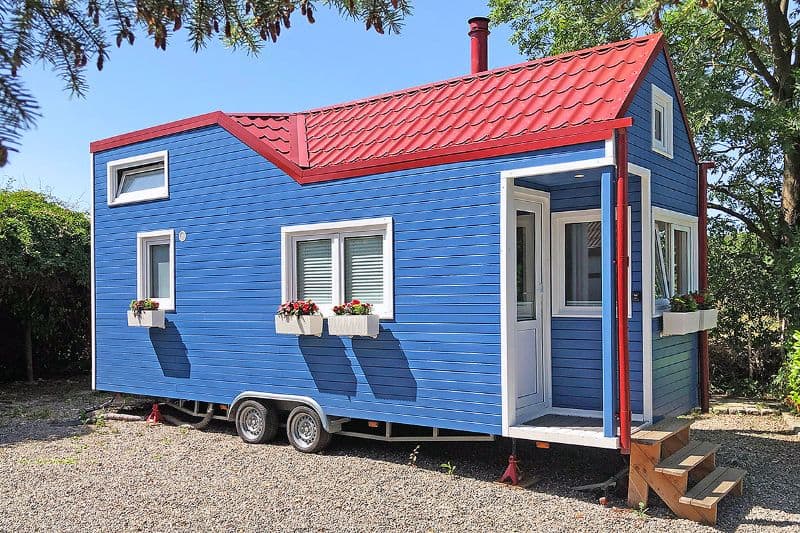
Longtime readers of this blog have already read my articles on RV design, such as subfloor types, sidewall construction styles, roof leaks and maintenance, axle selection, etc.
So as you’ve (hopefully) learned, RVs aren’t built like anything else. RVs are mobile vacation dwellings. Kayak and ski storage matter more than clothes and kitchenware – the opposite of a normal home.
Meanwhile, Tiny Homes are designed around the comforts of everyday life: Office nooks, wardrobe closets, countertop space – things you’d miss if you went without them every day.
RVs are traditionally built in three construction styles: stick n’ tin, laminated fiberglass, or monocoque. We don’t hide plumbing and wiring inside the structure. We include onboard batteries, converters, inverters, tanks, water pumps, and other features necessary for self-contained dry camping.
But tiny Homes are a weird hodgepodge of design standards. Most are plumbed like an RV but built like a house: 2×4 stick-framed walls, cathedral ceilings, lap siding, corrugated metal roofing, etc. They have eaves, porches, stairways, lofts, nooks. You can read NOAH’s building standards for Tiny Homes here.
- Exterior Size: You can find either an RV or Tiny Home in almost any size imaginable. Both are limited by RV state and federal regulations. As a general rule, you won’t find them much bigger than 8.5-ft wide, 13-.5 tall, and 40-ft long.
- The majority of Tiny Homes are built on a flatbed trailer, like a travel trailer. A minority are built as 5th wheels/goosenecks.
- RVs are available in any flavor you can think of: travel trailers, 5th wheels, Class B motorhomes, Class A coaches, flatbed truck campers, teardrop campers, etc.
- Interior Space: Most RVs have slide-out rooms for expanded living space. Very few Tiny Homes do (most slide-outs couldn’t handle the weight of a fully finished Tiny Home nook). So while you’d think THOWs are bigger, in reality, a mega 5th wheel with triple slide-outs will have more space.
- Common THOW interior floorplan size: 200-306 sqft*
- Common RV interior floorplan size: 112-340 sqft
- *PMRVs and NOAH-certified THOWs can be as large as 400 square feet.
- Weight: Tiny Homes are HEAVY!!! They weigh roughly 2-3x as much as a comparable RV. Most weigh 10,000-20,000 lbs or more, which cannot be safely flat-towed by most passenger trucks. This severely restricts their mobility. Many backroads can’t accommodate a Tiny Home’s bulk!
- Most states also require a non-commercial CDL or other specialty license if you tow more than 10,000 lbs.
- Plumbing: RVs use onboard fresh water and waste holding tanks. Out of necessity, so do most Tiny Homes. However, some THOWs don’t have tanks. They must be connected to a sewer drain and fresh water supply instead.
- Note on toilets: Most RVs use gravity toilets, which just plop! Into a waste tank. However, many Tiny Home owners actually prefer composting toilets, which don’t require a dump station for emptying.
- Non-Toxic Materials: I’m giving the nod to Tiny Homes. As I’ve written about before, cheap RVs don’t always use the most eco-friendly materials. But many Tiny Home builders pride themselves on using sustainable, natural, healthy materials.
- Customization: Unless you work with a custom RV builder, THOWs offer much more personalization possibilities.
- 99% of RVs are manufactured. They’re built on an assembly line with standard core features. Your options are limited to what’s on the dealer’s sheet.
- Tiny Homes, meanwhile, are much more customizable. There are not very many “mass manufacturers” of Tiny Homes. For the most part, it’s a similar experience to building your own home, only your Tiny Home builder is architect, GC, and subcontractor[s] all in one.
I think Tiny Homes have a much better build quality, overall. However, this quality comes at a cost. They cost 2-3x as much as a comparable RV.
Insurance

Lots of companies offer RV insurance: Progressive, Good Sam, Twin Peaks, RV America, etc. With the rise in full-time RVing, you can even find companies that specialize in full-time RV insurance.
Insuring a Tiny Home on wheels can be … interesting.
- If your THOW is certified as an RV or Park Model RV, which is built to certain codes and standards by licensed manufacturers, you can obtain RV insurance fairly easily. It’s no different than any other RV.
- If your THOW has a NOAH certification, then several insurance agencies – State Farm, Foremost, American Modern, and American Family – will insure your Tiny Home so long as it isn’t moved more than once or twice per year. Your options are limited, though.
- If your THOW doesn’t have ANY certifications, then all bets are off. You might not be able to find anybody willing to write you a policy. You should contact an insurance agency before you start building so you know what documentation is required for the underwriting arrangement.
Registration
Registering an RV or PMRV is as easy as registering your car: Take the MSO (Manufacturer’s Statement of Origin) to your local DMV, gripe about the line, fill out the paperwork, complain some more, and be on your way.
Registering a NOAH-certified THOW is more complicated. It comes down to whatever your state’s laws are. Oftentimes, you’ll register the Tiny House as a trailer instead of an RV. Or vice versa.
Registering a DIY Tiny House on a trailer can be a nightmare depending on your state laws. You’ll likely need receipts for all building materials, a Statement of Construction, a building timeline, pictures of the build process and finished product, and a VIN inspection by the police department – at a minimum. The review process can take 3-6 months.
Zoning & Parking
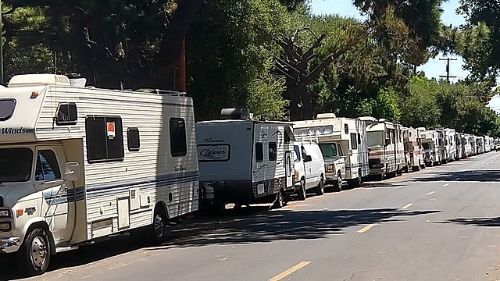
Please remember that registration is only half the battle! Registering your RV or Tiny Home with the DMV doesn’t empower you to park it wherever you want. Most localities have strict zoning ordinances. In some places, you might be able to park your RV or THOW as an Accessory Dwelling Unit (ADU) in your backyard. In other counties or states, you can’t (in some places, like the rural Ozarks, no one even cares!).
Financing
Plenty of companies offer RV financing with 10, 15, or 20-year terms. This extends to Tiny Homes sold as RVs and Park Model RVs. Here’s a full guide to RV Insurance 101.
If your Tiny Home is NOAH-certified, options for financing are very limited. You can’t get a conventional mortgage or construction loan if your home isn’t built on a permanent foundation. There are just a handful of companies, like Lightstream, that offer Tiny Home-specific loans.
For other Tiny House builds, your only two options are builder financing (if they offer it) and unsecured personal loans, which are almost entirely dependent on your credit score and income. Unsecured loans are commonly 3, 5 or 7-year terms, with high monthly payments.
Winter Camping
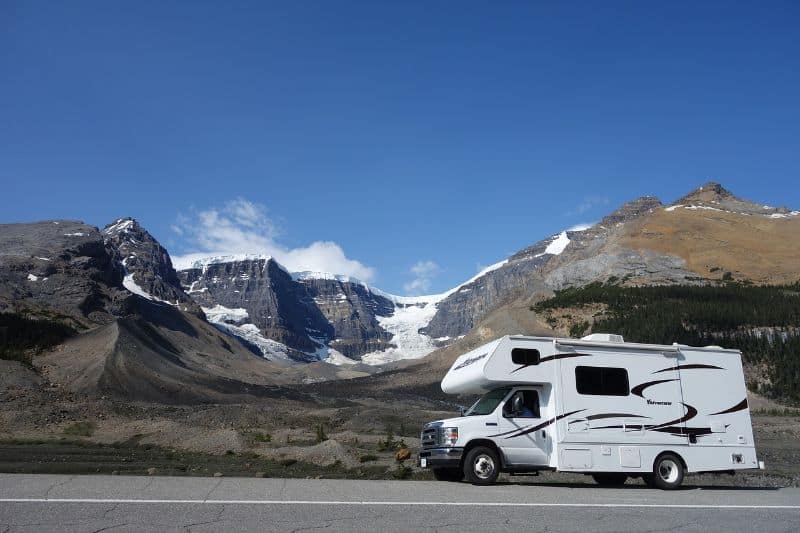
Anyone who has taken their family travel trailer camping in the dead of winter knows that RVs aren’t built for cold climates. Except for true 4-season RVs, recreational vehicles are 3-season rigs only. RVs can be modified for winter camping, but it takes some grit, some guts, some money, and lots of planning: extra propane, skirting, heated hoses, insulated tanks, etc.
If you want a true 4-season RV for hard northern life, you’ll need to shop carefully, something like a Minnesota icehouse. Even a Northwood Arctic Fox might need some modifications to survive a Canadian winter.
Living in a Tiny House in the winter, meanwhile, couldn’t be easier. Tiny Houses typically boast 2-5x the insulation of an RV! And they shed show, rain, hail, and sleet with ease. There’s no chance of your roof caving in from snow load or an ice dam forming around your air conditioner.
I could heat my 200-sqft Tiny House with a catalytic propane heater and a single 20-lb tank of propane a month. That’s a $20/month heating bill, people! An RV the same size would typically take 3-4x that much propane to heat during the winter.
Plus, Tiny Homes have more mass, so they retain heat better. An RV can lose all its warmth in a matter of hours (or minutes, if they’re drafty). Tiny Houses can still be warm-ish after spending all day away. Again, Tiny Homes prove they are better at year-round living.
Single-Floor Living
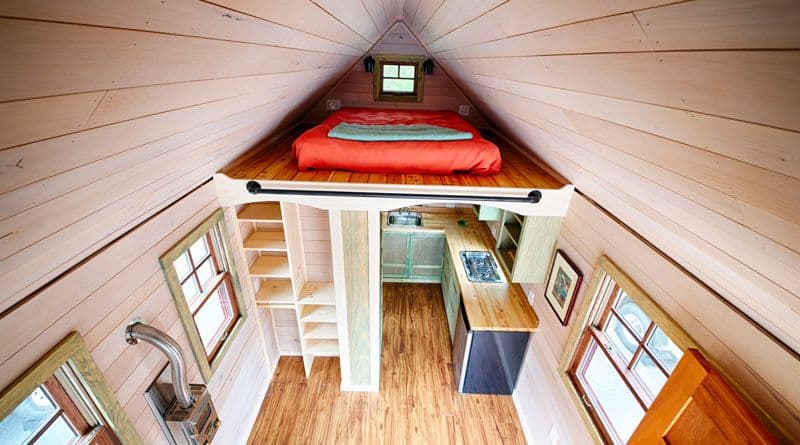
Everyone loves a picture of a Tiny House bedroom loft, don’t they? It’s so cute! It’s a throwback to our days as kids, when we curled up in hammocks and treehouses and pretended to be squirrels hibernating for the winter (just me? Ok …)
But older knees, backs and hips can’t always take the steps, the crouching, and the crawling. Due to their limited footprint, most Tiny Homes have bedroom lofts, not master bedroom suites on the main floor. If you’re gettin’ further along, you can find RVs designed for people with limited mobility.
Conclusion

If you’re frustrated and thinking, “Why can’t I just get the best of both worlds?!” then I get it. It is frustrating. I don’t know of any product on the market that ticks all the boxes of both an RV and a Tiny House.
Instead, you have to prioritize. What features are most important to you?
- Start with how often you plan to relocate. Any more than once a year, and I say stick with an RV. If once a year or less, then consider a THOW or a PMRV.
- Next, consider your zoning regulations. Are you allowed to park an RV or Tiny House where you want? Do you need utilities? A special permit?
- Investigate the back end. Don’t make a purchase without planning for financing, insurance, and resale!
- If you just adore the look of a Tiny House, why not work with a custom RV builder to get the moveable mountain cabin of your dreams? Something straight outta Elkhart probably won’t cut it.
There are two types of people interested in the Tiny Home movement: the rebels who believe in eco-friendly minimal living, and people who just want a cuter RV.
If you’re the first, then go get ‘em! I’d say do whatever you want, but you already would, wouldn’t you? Blaze those trails!
If you’re the second, then I really advise that whatever you buy needs to be RV-certified. You either need a conventional RV, a destination trailer, or a Tiny Home-sold-as-an-RV.
Leave a Reply